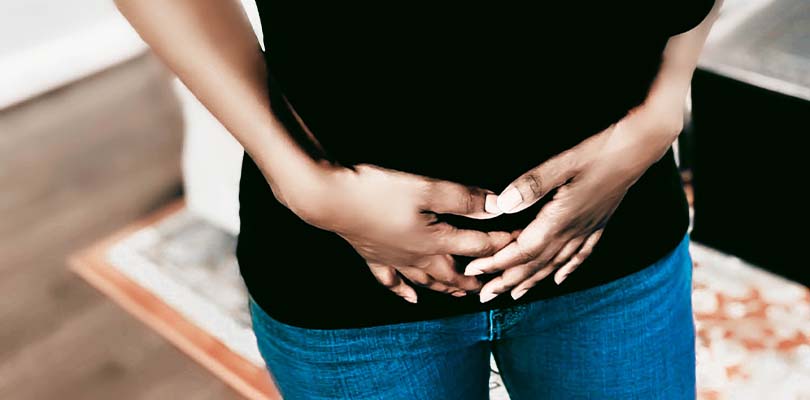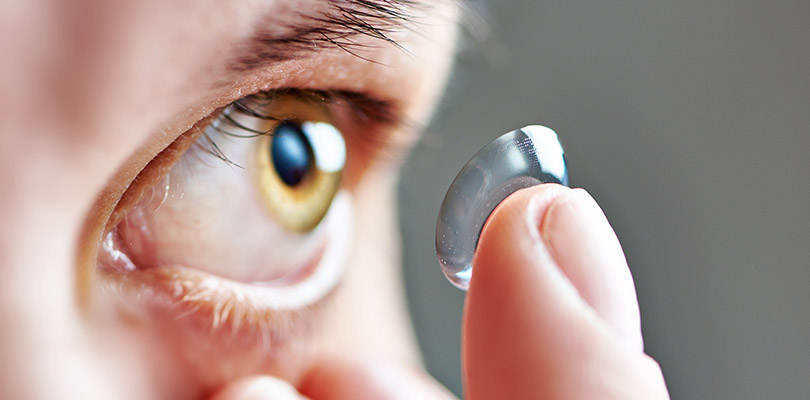What Are the Signs of Ovarian Cysts?
Most women experience an ovarian cyst at some point in their life, and while the majority of ovarian cysts are asymptomatic and disappear without treatment within a few months, some women experience painful cysts that may rupture, causing severe pain. Here we explain what the signs of ovarian cysts are, so you can be aware of the symptoms you may experience.
What Is an Ovarian Cyst?
A woman’s body has two ovaries, located on both sides of the uterus. Eggs develop and mature in the ovaries before being released each month during a menstrual period. Ovarian cysts refer to pockets, or fluid-filled sacs, that develop either in an ovary, or on the surface of an ovary.
Types of Ovarian Cysts and Their Causes
There are various types of cysts.
Functional Cysts
Each month the ovaries grow cyst-like structures (follicles). These follicles produce progesterone and estrogen and are responsible for egg release at ovulation. If a normal follicle continues to grow, it is termed a functional cyst. Typically, functional cysts are harmless, rarely cause pain and resolve on their own within two to three months. There are two types of functional cysts:
- Follicular cyst. This is the most common type of functional cyst. Approximately halfway through the menstrual cycle, an egg is released from its follicle and flows through the fallopian tube. When the follicle does not release the egg and continues to grow, a follicular cyst develops.
- Corpus luteum cyst. When a follicle releases the egg, estrogen and progesterone are produced. The follicle is now referred to as a corpus luteum. If fluid starts to accumulate inside the follicle, the corpus luteum may begin to grow a cyst.
There are other types of cysts that are unrelated to the menstrual cycle. These cysts are far less common than functional cysts.
Endometriomas
These cysts develop due to endometriosis, a condition where uterine tissue grows outside of the uterus. In some cases, this tissue attaches to the ovary and forms a cyst. These cysts are often filled with blood and have a reddish brown color and are termed “chocolate cysts”.
Dermoid Cysts
These are also referred to as teratomas and develop from embryonic cells. They may contain tissues including skin, hair and/or teeth. Rarely, these cysts are cancerous.
Cystadenomas
These cysts may be filled with a watery or mucus-type material and develop on the surface of the ovary.
Dermoid cysts and cystadenomas have the potential to become quite large, resulting in the affected ovary moving out of position. Having these types of cysts increases the risk of ovarian torsion (painful twisting of the ovary) which may result in a decrease or stoppage of blood flow to the ovary.
Risk Factors for Developing Ovarian Cysts
There are different risk factors for developing ovarian cysts:
- Hormonal disturbance. Hormonal disturbance often occurs when taking fertility drugs, such as clomiphene (Clomid), which is used to induce ovulation.
- Endometriosis. This is the condition in which the endometrial cells grow on the outside of the uterus; it can cause growth of ovarian cysts.
- Previous ovarian cysts. Having a prior ovarian cyst increases the risk of developing another one.
- Pregnancy. When the ovulation process starts, a cyst forms, which might stay on the ovary during the pregnancy.
- Pelvic infections. Severe pelvic infection can spread throughout the fallopian tubules and the ovaries, resulting in ovarian cysts.
If you’re the parent of a child with a food allergy, wearing a medical ID could save your child’s life. Learn more about why medical IDs for kids can help.
Complications Related to Ovarian Cysts
Ruptured Cyst
Rupturing of a cyst can result in severe internal bleeding and pain. The greater the size of a cyst, the greater the chance of rupture. Activities such as vaginal intercourse can also increase the chance of ovarian cyst rupture.
Ovarian Torsion
Larger cysts may cause the affected ovary to move, increasing the chance of ovarian torsion. The most common symptoms of ovarian torsion include nausea, vomiting and pelvic pain.
Symptoms of Ovarian Cysts
Most ovarian cysts are harmless and resolve on their own within a few months. However, in some cases, women may experience severe symptoms:
- Abdominal and/or pelvic pain
- Pain during or after sexual intercourse
- Abdominal fullness
- Bloating
- Indigestion
- Lower back pain
- Difficulty emptying the bladder
- Urinary urgency
Treatment for Ovarian Cysts
Doctors advise surgical removal of ovarian cysts that continue to grow, and for those that fail to resolve on their own, via laparoscopy. For larger cysts, a laparotomy may be needed, which involves a larger incision in the abdomen. Biopsy of ovarian cysts is typically performed following surgical removal. In the case that a cyst is found to be cancerous, your doctor may recommend a hysterectomy to remove the uterus and ovaries.
Additionally, your doctor may recommend oral contraceptives to prevent ovulation to reduce the risk of new cysts developing.
Prevention of Ovarian Cysts
Knowing the signs of ovarian cysts can help diagnose your symptoms, but there is no natural way to prevent ovarian cysts completely. However, a regular examination helps to ensure an accurate and early diagnosis and treatment to prevent potential complications such as cyst rupture and ovarian torsion.







